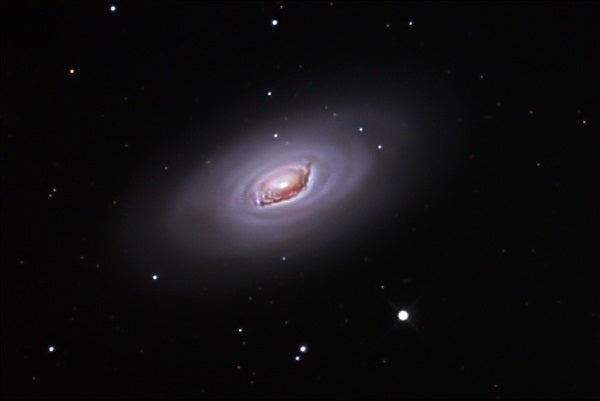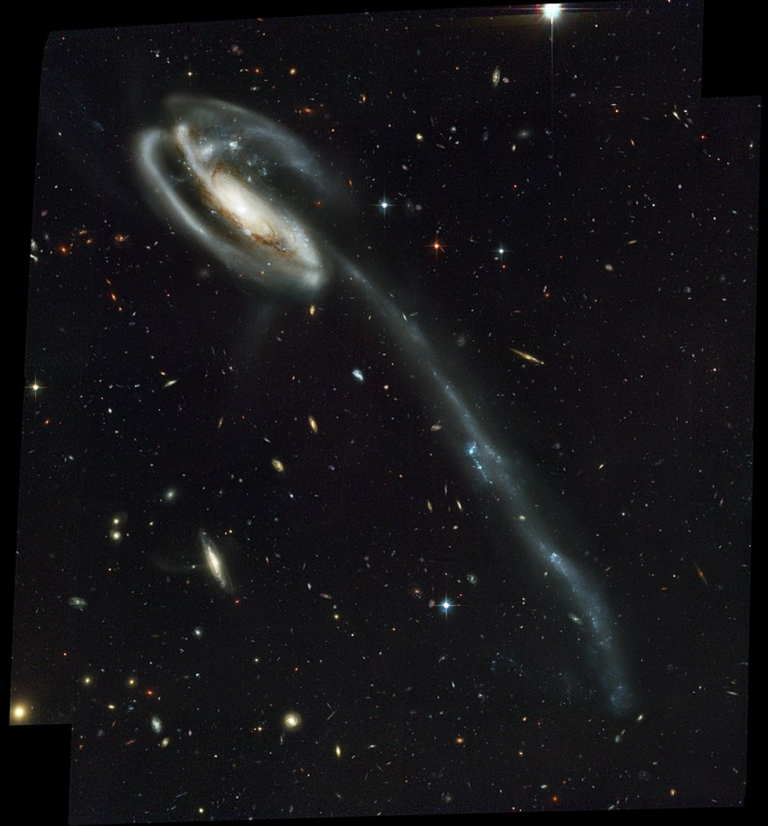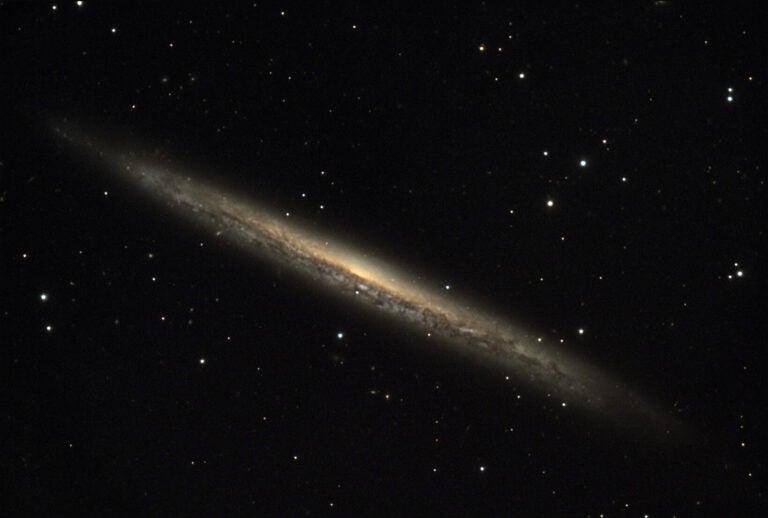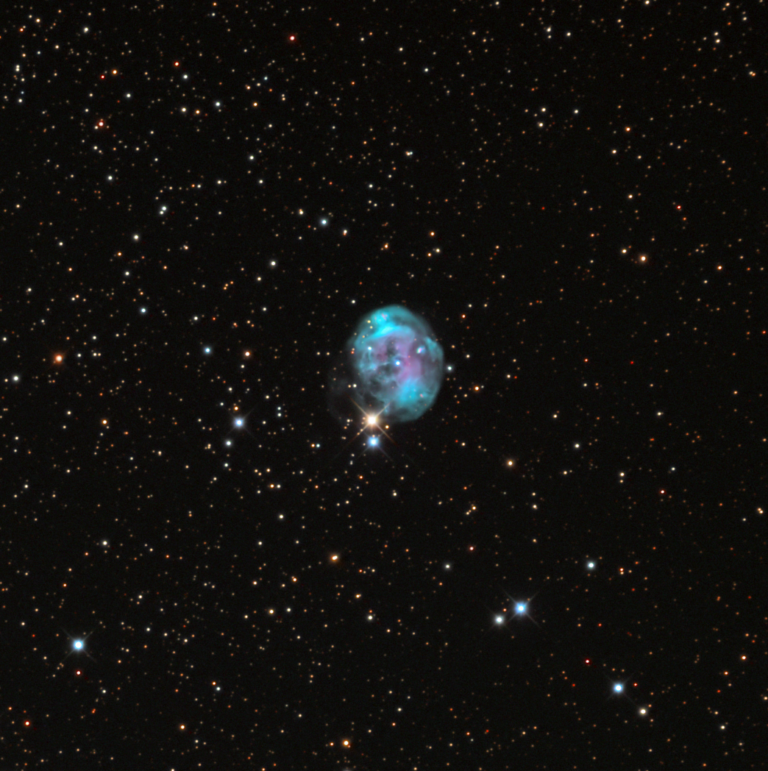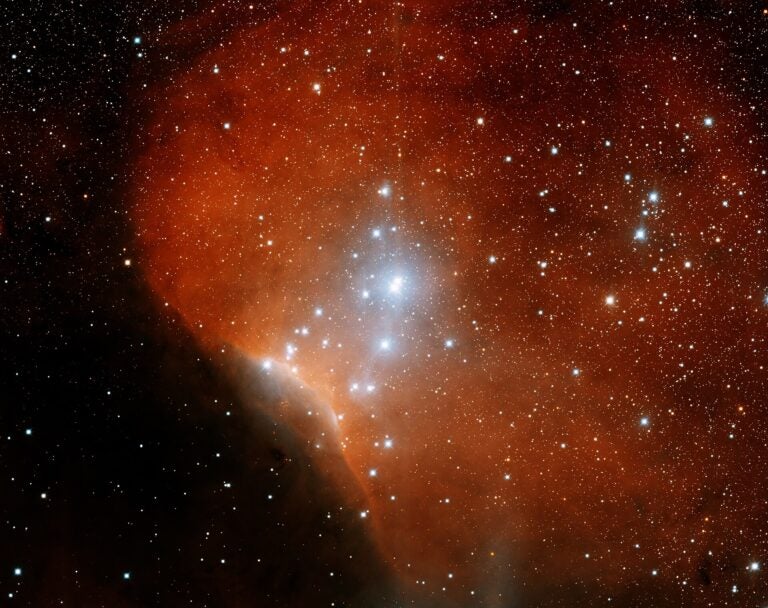Extragalactic pugilist M64, the Blackeye Galaxy in Coma Berenices, sports a massive shiner of dust that lies asymmetrically across the galaxy’s prominent bulge. Apparently, M64 met another galaxy over a billion years ago and did not so much battle it as assimilate it. Nevertheless, that feisty dwarf system caused significant turbulence in M64: The stars and gas in M64’s inner disk rotate in the opposite direction as its outer regions.
Compression during the merger likely ignited bouts of regional star formation in the galaxy’s bulge, where youthful stars contribute a blue tint. This contrasts nicely with the red tint found at the galaxy’s core, which is rich with older stars. Cataloged distances to M64 vary, but recent estimates put it at between 14 million and 24 million light-years away.
English astronomer Edward Pigott discovered M64 on March 23, 1779. Twelve days later, German astronomer Johann Elert Bode independently sighted it as a “small nebulous star.” Pigott’s observation, however, was not made public until it was read before the Royal Society of London in 1781. Messier was unaware of this find when he prepared his final catalog. Consequently, Pigott’s discovery remained in the shadows until 1907, when French astronomer Guillame Bigourdan linked Pigott’s reported position of the “nebula” to M64.
To find this intriguing galaxy, look just 1° northeast of 5th-magnitude 35 Comae Berenices. Under a dark sky, the magnitude-8.5 galaxy appears as a tiny puff of light through 10×50 binoculars. Small telescopes will show its smooth, oval disk (10′) punctuated by a bright core of light. The disk also has a milky sheen and a blue-white color.
The galaxy takes magnification well. High power is required to see its black eye, which skilled observers have glimpsed through apertures as small as 2.4 inches. Moderate-sized telescopes and high magnification, however, are generally required to show this dust patch well. Look for a subtle absence of light, rather than an intense darkness. At 240x, John Herschel called it a “vacuity below the nucleus.” (Curiously, at 320x, he thought the nucleus resembled a double star.) Seeing the galaxy’s pinwheel arms requires larger apertures, as well.
Make sure to explore Astronomy’s full list of 101 cosmic objects you must see. New entries will be added each week throughout 2022.
To get the latest astronomical news and observing content delivered directly to your door, subscribe to Astronomy magazine today!

